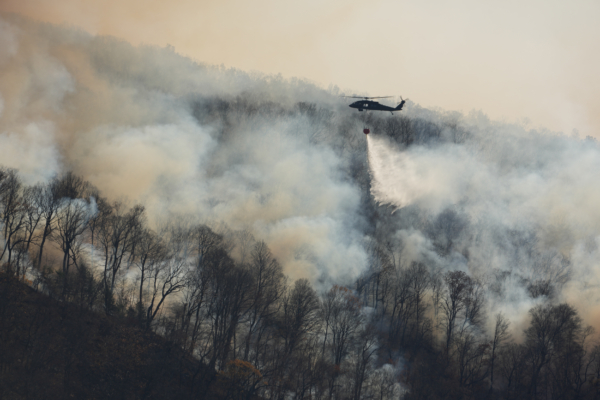The Northeastern United States is currently facing severe drought, with some trees in New York City already shedding their leaves prematurely. Rivers and wells in multiple areas in New England have dried up, sparking concerns about autumn wildfires.
According to drought monitoring data in the United States, over 80% of the Northeast region is currently experiencing “abnormally dry” or “drought” conditions, compared to only about 10% during the same period last year. Some areas have gone several weeks without significant rainfall, a situation reminiscent of last year, which saw widespread wildfires erupting in New York City and its surrounding areas.
Due to drastic decreases in stream flow and continuously declining groundwater levels, environmental officials in New York State are urging residents to conserve water. Meanwhile, the risk of wildfires has increased in states like New Hampshire, Maine, and Vermont, with Vermont experiencing its first statewide drought on record since 2000.
Samantha Borisoff, a climatologist at the Northeast Regional Climate Center at Cornell University, pointed out to 1010 WINS that as vegetation dries up and trees shed their leaves prematurely due to drought stress, flammable materials continue to accumulate, increasing the risk of autumn wildfires.
Jennifer Francis, a senior scientist at the Woods Hole Research Center in Massachusetts, explained that the Northeast often experiences a pattern of “drenching rain in one area, drought in another” during the summer. While thunderstorms can cause heavy rain and even flooding in localized areas, adjacent regions may remain completely dry. This summer, the lack of moisture from Atlantic hurricanes, combined with high temperatures, has led to the worsening drought conditions.
In densely populated urban environments, the risk of fires becomes even more severe. Central Park received only half of its average rainfall in August, with the total summer rainfall accumulating five inches below normal levels.
Kevin Woods, the operations commander for the New York City Fire Department, stated that last autumn, New York experienced record-breaking drought and wildfires. Within just two weeks from late October to mid-November, firefighters had to respond to 229 fire alarms, stretching fire-fighting resources to their limits. Intense wildfires were reported at sites like Prospect Park and Inwood Hill Park, with a lack of water sources posing a significant challenge.
To address the risks this autumn, the Fire Department has purchased additional miles of lightweight forestry hose to allow for easier transportation deep into parks by personnel. They have also enhanced training on “relay pumping” to extend the distance water can be transported by pumps.
Weather forecasts indicate that the drought conditions in New York City may improve by the end of the year, but many areas in New England are expected to remain in distress. Experts warn that even with heavy rainfall, it will be difficult to completely reverse the drought situation, as true relief requires multiple rounds of gentle rains lasting throughout the day. With climate change leading to more frequent droughts and extreme heat, the risk of wildfires will persist in the long term.

